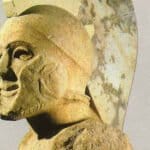Enter the enchanting realm of Aesop, the legendary Greek master of fables. His captivating tales, brimming with wisdom and charm, have resonated for generations. We’ll explore the ancient Greek roots and timeless truths within his stories, examining Aesop’s enigmatic persona and the enduring legacy of his animal-filled fables. Embark on a journey into the mind of Aesop, where animal-inspired stories illuminate the complexities of human nature with remarkable wit and clarity.
Unraveling the Mystery of Aesop
Aesop. The name echoes through time, whispering of a storyteller, a teacher, a Greek fabulist veiled in shadows. Did he truly exist, this man who spun tales of talking animals and cunning schemes? The answer remains elusive. He is an enigma, a puzzle with missing pieces. Ancient writers like Herodotus and Aristotle mentioned him, offering a faint trace, suggesting he may have lived sometime between the 7th and 6th centuries BC. Some believe he may have been a slave; others speculate he was a traveling entertainer. The truth, probably lost to time, adds to the allure of this mysterious figure. To learn more about the context of his time, research the Greek Bacchanal, a festival that offers insights into ancient Greek culture.
While his life remains hazy, his stories shine brightly with enduring wisdom that transcends centuries and cultures. Consider the slow and steady tortoise winning the race against the speedy hare, or the tiny mouse saving the powerful lion. These are not merely children’s tales; they are Aesop’s fables, potent with moral lessons that still resonate today. Phrases like “sour grapes” and “crying wolf,” woven into our collective consciousness, originate from these ancient narratives.
Aesop’s genius lies in his simplicity. Using animals as stand-ins for humans imbues his fables with universal appeal. A fox might represent cunning, a wolf greed, and a lamb innocence. This allows us to see ourselves reflected in these animal characters, recognizing our strengths and weaknesses. It is a mirror to human nature, reflecting our follies and aspirations. Aesop didn’t preach; he told stories, letting the lessons unfold naturally, making them easily understood and remembered.
Aesop’s influence ripples through history. Later writers like the Roman Phaedrus and the Frenchman Jean de La Fontaine retold and adapted his fables, breathing new life into them across languages and cultures. Artists, too, found inspiration in his work, evidenced by the depictions of his fables carved into the walls of the labyrinth at the Palace of Versailles. These stories, possibly whispered by a slave centuries ago, are now immortalized in one of the world’s grandest palaces, a testament to their enduring power. To understand the cultural influences of the time, it’s helpful to read about Cupid’s Greek Counterpart and the mythological context surrounding love and desire.
Ongoing debate surrounds the origins of some fables. Were they all crafted by Aesop, or did they emerge from oral tradition, gradually attributed to him? Some scholars suggest “Aesop” might not represent a single person but a collective label for a group of storytellers. The mystery is part of the magic, keeping us guessing and wondering about the man behind the mouse and the lion, the tortoise and the hare.
Exploring Aesop’s Enduring Legacy
Aesop, whether a real person, a collective of storytellers, or a myth, holds a special place in world literature. His seemingly simple tales continue to inspire, teach, and remind us of the enduring power of storytelling, whispering across centuries that wisdom, like the tortoise, often outruns the hare.
Key Points about Aesop and his Fables:
- Origins and Existence: Shrouded in mystery, with various accounts of his life and profession (possibly a slave or entertainer). His actual existence remains debated.
- Time Period: Likely lived between the 7th and 6th centuries BC.
- Fables: Famous for his timeless fables, using talking animals and clever scenarios to teach moral lessons.
- Storytelling Genius: Animals stand in for humans, enabling readers to recognize their own traits and behaviors.
- Influence: Adapted and retold by countless authors and artists, inspiring a vast and enduring legacy.
- Enduring Power: Continues to resonate with readers across cultures and generations.
- Contemporary Relevance: Themes remain relevant, offering insights into human nature, values, ethics, and behavior.
Exploring Different Facets of Aesop’s Legacy:
| Area of Study | Description |
|---|---|
| Historical Context | Examining the social and political landscape of Ancient Greece to better understand the context in which Aesop’s storytelling may have emerged. |
| Cultural Impact | Exploring how Aesop’s fables have been adapted, reinterpreted, and integrated into different cultures throughout history. |
| Psychological Analysis | Investigating why fables, with their animal protagonists and moral lessons, resonate so profoundly with human psychology. |
| Storytelling Techniques | Analyzing Aesop’s use of animal characters, simple language, and clear moral messages to understand the effectiveness of his storytelling style. |
| Contemporary Relevance | Exploring how themes of greed, honesty, perseverance, and other virtues and vices continue to hold relevance for modern audiences. |
Who Was the Famous Greek Teller of Fables?
We all recognize stories like “The Tortoise and the Hare” and “The Boy Who Cried Wolf.” These classic fables, teaching life lessons through talking animals and clever scenarios, are linked to Aesop. Pinning down the real Aesop, however, remains a challenge. He is a figure shrouded in mystery, a legend, whose life details remain elusive despite the enduring popularity of his stories.
Aesop likely lived around the 6th century BCE, predating ancient Rome. Many portray him as a slave who gained freedom through storytelling and wisdom. This image of a wise slave using stories to navigate a complex world is compelling, adding to the mystique surrounding him. However, it likely originates from later narratives, not historical records, meaning it probably doesn’t capture the complete truth.
The impact of Aesop’s work is undeniable. His fables explore the human condition: our strengths, weaknesses, triumphs, and failures. They delve into morality, ethics, and the consequences of our choices. Aesop’s stories highlight why qualities like honesty and hard work are important. The fact that we still discuss these stories thousands of years later speaks volumes about their power. They’ve been translated into countless languages, adapted, and continue to be shared worldwide.
Different versions of the same fable exist. Some experts believe this suggests they evolved over time, passed down orally before being written, making it difficult to definitively attribute each story to Aesop. Ongoing research may illuminate the origins of these stories, but for now, Aesop’s life and the creation of his fables remain a puzzle.
What Do You Call a Fable Teller?
We’ve explored fables, short stories often featuring talking animals that teach valuable lessons. But what do we call the person who crafts these tales? The answer is a fabulist. Fabulists are storytellers with a purpose, weaving narratives that both entertain and educate.
Aesop is perhaps the most recognizable fabulist, practically synonymous with the genre. Though his existence is debated, “Aesop” and “fable” are often interchangeable, suggesting his impact on storytelling. He represents the archetype of the wise storyteller.
If there’s doubt about Aesop’s existence, how do we know who wrote the fables attributed to him? Some theories suggest “Aesop” might have been a collective name for storytellers who shared tales orally. Others believe he was a real person whose stories were later compiled and expanded. It’s an area of ongoing research.
While Aesop’s identity remains unclear, we can appreciate the legacy of the fables associated with his name. They’ve traveled across cultures and time, teaching valuable lessons.
| Term | Description | Example |
|---|---|---|
| Fable | A short story, often with animals as characters, conveying a moral lesson. | The Tortoise and the Hare |
| Fabulist | A writer or teller of fables. | Aesop |
Anyone can be a fabulist. Sharing wisdom through fables can connect with others powerfully. The art of the fabulist thrives, and everyone can contribute.
While we understand what a fabulist is, details about Aesop remain uncertain. This mystery adds to the fascination with Aesop and his fables, reminding us that sometimes the stories we tell about the past are as compelling as the facts themselves.
Who Was the Greek Writer of Fables?
We’ve discussed fables, but who was Aesop? Pinpointing him is a challenge.
Aesop is associated with ancient Greece, likely the 6th century BC. Whether he was a real person or a collective legend remains debated. Some believe he was a slave who earned freedom through storytelling; others suggest “Aesop” was a name given to a group of storytellers.
If his existence is uncertain, how do we have the fables attributed to him? They were likely passed down orally for generations, evolving before being written down.
Aesop’s fables tackle significant themes: greed, honesty, kindness, cleverness, and navigating the world. “The Tortoise and the Hare” teaches that slow and steady wins the race, while “The Boy Who Cried Wolf” warns against dishonesty. These fables offer insight into human nature, reflecting our strengths and weaknesses.
It’s remarkable that these stories, possibly told around campfires centuries ago, remain relevant today. Their continued presence in classrooms, movies, and plays speaks to the enduring wisdom within them.
Here’s a summary of what we know about this mysterious storyteller:
| Feature | Description |
|---|---|
| Identity | Likely a storyteller from ancient Greece, possibly a slave, but his actual existence is still debated. |
| Style | Short, simple stories, often featuring animals, that convey moral lessons. |
| Themes | Greed, honesty, kindness, cleverness, perseverance, the dangers of pride, and the complexities of human behavior. |
| Legacy | Enduring popularity across cultures and time, influencing literature, education, and the arts. |
| Ongoing Research | Scholars continue to investigate the origins of the fables and the possibility of multiple authors contributing to the “Aesop” tradition. |
While we may never fully know Aesop, his impact is undeniable. His stories spark conversations, teach valuable lessons, and offer insight into timeless truths. Perhaps this legacy surpasses solving the mystery of the man himself. The story of Aesop, like his fables, will probably continue to evolve.
- Unlock Water’s Symbolism: A Cross-Cultural Exploration - April 20, 2025
- Identify Black and White Snakes: Venomous or Harmless? - April 20, 2025
- Unlocking Potential: Origins High School’s NYC Story - April 20, 2025
















1 thought on “Aesop: The Enigmatic Greek Teller of Fables and His Timeless Wisdom”
Comments are closed.